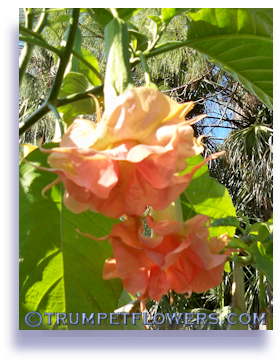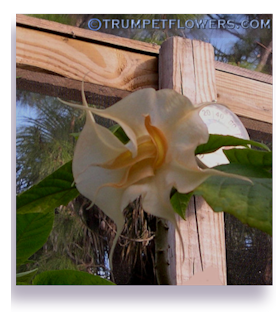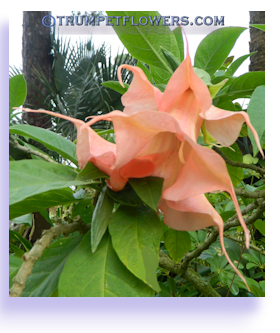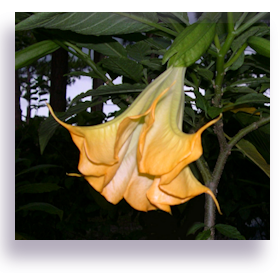White Sapote
Care for and Grow White Sapote
White sapote, or Casimiroa edulis, is a subtropical fruit tree that originates from Mexico, Guatemala, Costa Rica and El Salvador. Of all the sapotes, (pronounced sa-poh-tay) I think the White sapote tastes the best. The black ones I do not favor at all. True mameys taste delicious, like a combination of peach and almond, but they do not do well in my environment so I've given up on them. What the mamey won't do, the White sapote does in earnest for me in South west Florida. It grows very well in our poor soil conditions and doesn't demand much attention. White sapote is also a relatively fast grower for me, and in 4 years had attained a height of 8 feet from seed to field.
The taste of White sapote varies from tree to tree, and many people buy named cultivars that are grafted to attain a particular flavor. They normally taste like a combination of custard and banana. But I like growing things from seeds, so that is how I attained mine. It might take me a little longer, but I have a little time left on this earth, so gave them a try.
White sapote can eventually reach a height of 50 feet with a wide canopy. I prune the canopy every fall to keep the size managable. I don't want to climb into a tree so tall to get at the fruit. The canopy can get just as wide, so when planting in the yard, be sure to keep it that far away from other structures, or plan to prune sharply.
Starting from seed
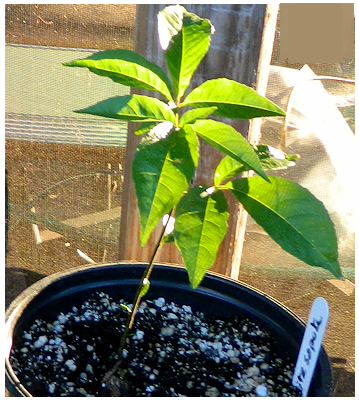 Sapote are easily grown from the fresh, large seeds and if planted right away will germinate in 3 weeks to a month.
Place the seed just under a seedling type soil mixture. Make sure to keep the seeds moist. The shell will begin to crack open and sometimes you can even see a green lip on the edge as the young seedling grows straight up out of it.
Sapote are easily grown from the fresh, large seeds and if planted right away will germinate in 3 weeks to a month.
Place the seed just under a seedling type soil mixture. Make sure to keep the seeds moist. The shell will begin to crack open and sometimes you can even see a green lip on the edge as the young seedling grows straight up out of it.
Keep the seedling in a sheltered location where insect pests can't ravage it. White sapote very quickly grows it's tap root, so be prepared ahead of time by starting the seeds out in tall containers, at least a 1 gallon size.
Check the bottom of the pot for roots peeking out, and then gently repot into a deeper container. When you have reached a 3 gallon container size, and the feeder roots just under the surface of the pot are many, you can transplant the White sapote to a landscape location.
Prepare the location ahead of time by digging a hole that is 3 times as wide and as deep as the pot the White sapote is in. Remove all perennial weeds in a circle about 2 feet wide to start. Premix 1/3 regular compost in with your native soil. When removing the Sapote from the planter pot, be very careful not to break the taproot. Gently break loose any roots along the sides of the pot after removing. You want the roots to be loose and free, not winding to the pot shape in any way. Back fill the hole to an appropriate height. You want the sapling to be just above the original soil surface.
Now carefully place the sapote in the hole, being careful with the taproot. Fill in the soil and tamp it down. Fertilize it with a half cup of granular citrus fertilizer. Place about 10 pounds of compost around the base and spread out thinly. Cover with mulch to keep weeds from coming back. Water well every other day for a month, to let the roots settle in and the tree will take to the earth. I like planting out seedlings in fall, but spring is good too, because down here the rainy season will soon kick in.
White Sapote saplings will need to be protected from heavy frosts. The first year mine was in the ground, we had a very light frost lasting about an hour before dawn and it did absolutely nothing to the plant. It is said after gaining some trunk girth they can withstand temperatures as low as 22°F.
Care of White Sapote
White sapote should be fertilized in April, June, and September. I use a time released granular fertilizer that has the micronutrients added. Apply it at the rate of girth the package says to. Citrus and Palm fertilizer works well for me. You can add a 40 pound bag of compost when you fertilize, spreading it out in a circle as wide as the canopy of the tree is. As the tree grows, you will be using more than one bag of compost, of course.
Stop all supplemental watering of the tree in November to allow the tree to rest. It will also help induce blooming when the sapote gets to the proper size. In South west Florida, they bloom in the fall, and sometimes again in spring. It takes about 8 months for the fruits to ripen. You should pick the fruits when they begin to get soft. Do a test run on a few to get the best flavor. These fruits spoil quickly and that is why you hardly ever see them in a supermarket. They are not good travellers. Fruit that has fallen to the ground may be tried, but may be too ripe and have begun to spoil. Protect the tree from squirrels and deer.
White sapote will usually fruit from seed within 8 to 10 years. Beware though, even though most are self fertile, sometimes a particualr seedling will throw only one flower type, be it male or female, and although you will get flowers, you will not get fruit. So plant out two seedlings just to be sure. White sapote likes to get some size to it before putting out any blooms, so when pruning try to open up the canopy. I use broken cinder blocks to weight down the branches that want to go straight up, tying them around the branch with the soft velcro strapping you can buy at the Big Box stores. After about 6 months the branch has taken the new form and the stone and strapping can be removed.
Update: I planted the above seedling in 2009. The last week of April, 2018, I got my first small fruit forming on the tree. The tree is now about 7 feet tall.
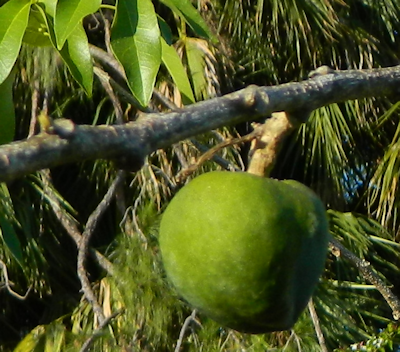
The Giant Swallowtail butterfly is attracted to Citrus and white sapote, so if you can spare a few leaves for their larvae, you will be rewarded with the beautiful winged jewels after a month or so.
Tags: white sapote, sapote, grow sapote, care for and grow white sapote,

